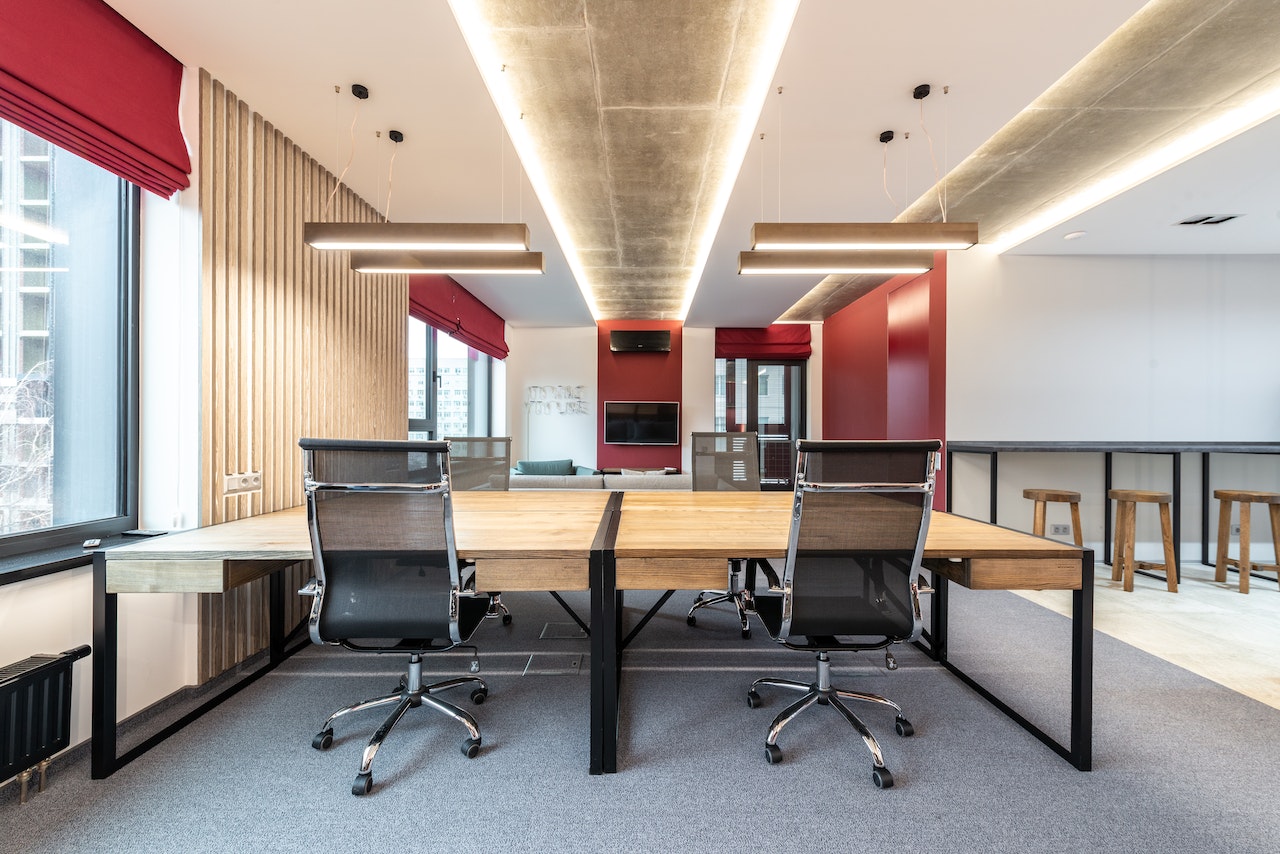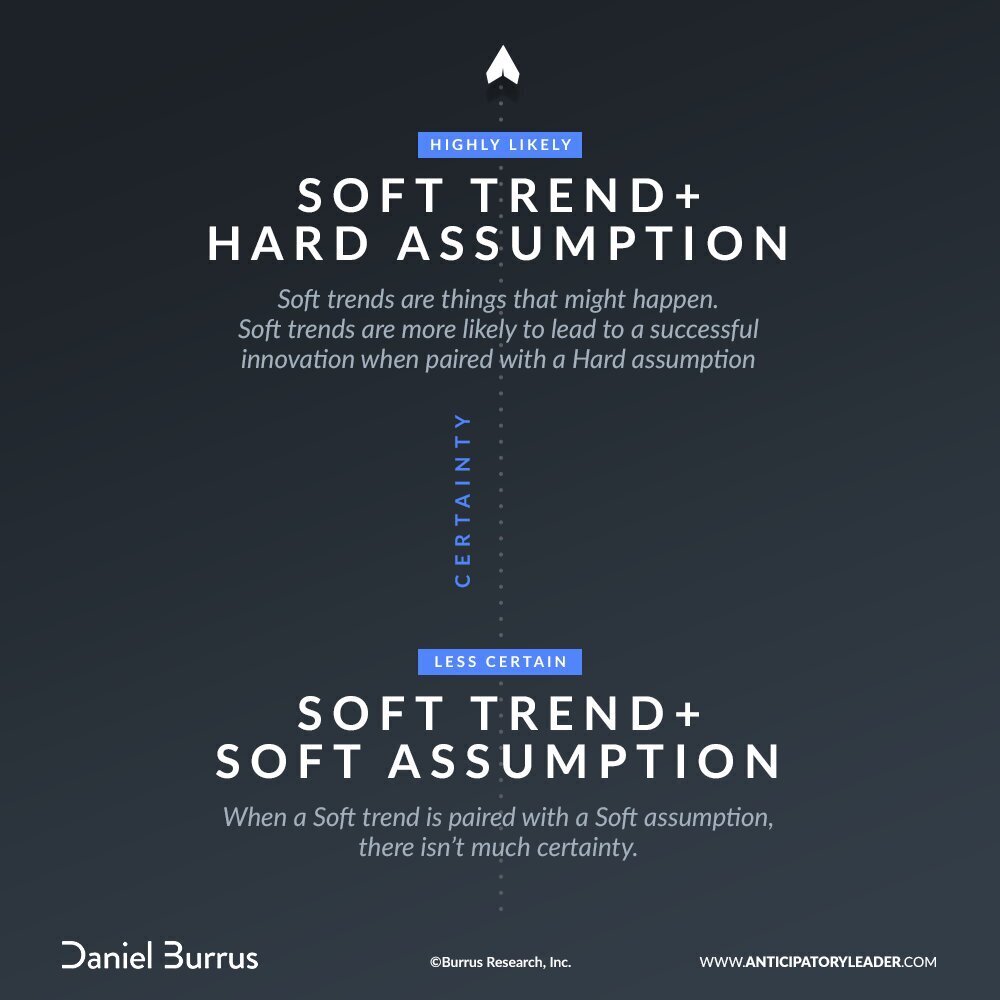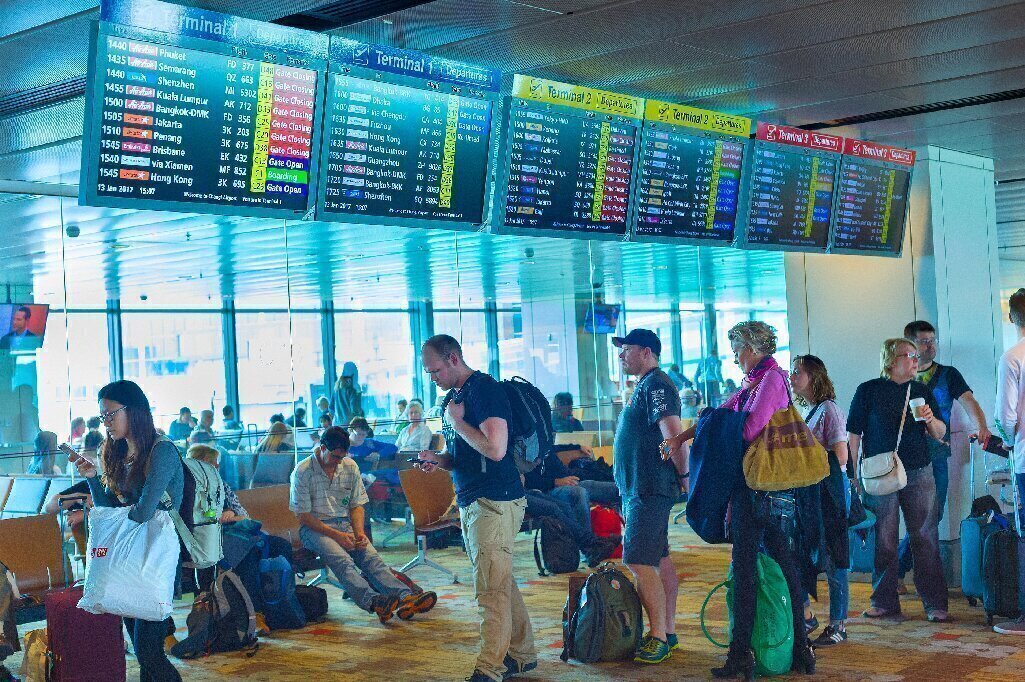Comments
- No comments found

The future itself is uncertain, and this is an all-too-often scary realization for businesses of all sizes and industries.
Where is your specific industry headed? Will a new technology come to be that leaves your current technology or operation completely in the dust? Will your customer base take a dramatic turn in their wants and needs? These are only a fraction of the questions that plague businesses on a daily basis.
Yes, the future is uncertain and this may strike fright in some. But to me, this uncertainty is exciting and full of opportunity thanks to the skills that come with an Anticipatory mindset!
The difference between those that fear the uncertain future versus those that find it exhilarating and ripe with opportunity is one’s ability to more clearly see the future in front of them and in turn, feel confident leveraging it to their advantage. And in my Hard Trend Methodology, the Soft Trend future possibilities are a vital piece to bringing certainty forward in uncertain times.
Soft Trends are those future possibilities that may or may not happen. These future “maybes” are open to influence. This is a real skeleton key to becoming the positive disruptor, just as much as those future certainties that will happen!
I have taught this concept for many years, yet every new year that comes around brings individuals who do not realize the real potential and disruptive power of leveraging Soft Trends to their advantage, just as they would leverage a Hard Trend. When something is open to influence, it means you can influence it in your own way and transform it into an advantage.
Thinking of it in software terms, a known Hard Trend future certainty is that more and more employees will work remotely in the years to come, while the Soft Trend is the remote working platform that is most efficient for remote employee engagement. Basecamp is one that comes to mind, which is a virtual and interactive task list for employees working remotely to communicate, assign work, and check off tasks as they go.
By an organization first identifying the Hard Trend of remote work, it should then be able to identify the Soft Trends around it. Software for working remotely is needed, and while Basecamp may be a great option, nothing is perfect, meaning entrepreneurs can leverage this Soft Trend and design something better!
What does this do for the uncertainties that come with the shift to fully remote work? It helps you as a business leader find certainty in all the uncertainties of having a decentralized workforce, knowing that you can influence how efficiently the shift happens while preventing you and your staff from trying to avoid a Hard Trend — something that cannot be avoided.
A core component to taking full advantage of Soft Trend future possibilities is to be both Anticipatory and agile. In sports terms, this is playing offense and defense, with anticipation acting as an American football team quarterback’s read on the defense while agility is adjusting to prevent a team trying to score on you; in corporate terms, a known competitor trying to disrupt you.

Let’s use a skiing analogy. Suppose you are skiing down a mountain. There are certainties that you know are coming, such as trees planted firmly in the mountain that you can avoid. Then there are the uncertainties you do not know for sure will happen, such as other skiers flying past you, someone falling in front of you, or hidden patches of ice.
If a skier is in front of you, you do not know whether they will fall or not, but you do know that because they are there, that possibility is evident. The skier’s existence is a Hard Trend, and their actions are the Soft Trend. Acknowledging that the skier falling is a possibility and that you have to be ready for it is playing defense, or being agile, and knowing how to dodge the fallen skier is playing offense, or being Anticipatory. You cannot have one without the other.
Ask any professional athlete — no team will make it to a championship without both a great offense and defense. Because we as humans have the capabilities of thinking critically about the future while appreciating the potential for something unpredictable happening to us, the potential for a powerful strategy in business is exponential!

Soft Trends are composed of two components: Hard Assumptions and Soft Assumptions. Hard Assumptions are those based on empirical data and analytics and Soft Assumptions are those that have no data to support their existence. They are quite literally assumptions based on emotion or superstition.
Let’s take the Southwest Airlines debacle that happened during the 2022 holiday season to better understand these two pieces of Soft Trends.
There are two nonnegotiable Hard Trend future certainties that always impact airlines in the winter. The first is that the holiday season always shows an increase in air travel. The second is that the winter season always brings winter weather patterns that affect the ability to fly. For this second one, the uncertainty comes with when these winter weather patterns will occur, or if they will occur at all.
Again, to leverage both Hard and Soft Trends and avoid ultimate disruption from anything, businesses need to be both offensive and defensive, or Anticipatory and agile, in their decision making. Unfortunately for Southwest Airlines, they were neither. Instead, they implemented a wait-and-see strategy that wasn’t Anticipatory but didn’t incorporate much agility either.
This past holiday season, the winter weather patterns brought a deep freeze and blinding blizzards in many parts of the country during the busiest time of the year for air travel. Southwest Airlines neglected to identify the Hard Trend that weather disruption will happen at any given point during the holidays.

But the real kicker was Southwest Airlines’s legacy systems, computer software, and even phone lines were outdated and unable to handle the number of flight cancellations and rescheduling that were being forced due to weather. Southwest canceled more than 16,700 of its flights between December 21-31, 2022.
Southwest Airlines could not influence the weather, but they could influence their ability to respond to it and be prepared for it, answering the question of “how can we prepare internally to be ready for tumultuous weather at any point during the busy holiday travel season?” Where other airlines were able to recover quickly from the weather disruption, Southwest Airlines lost nearly $825 million!
So, where do the pieces of Soft Trends — Hard Assumption and Soft Assumption — fall into place? For airlines to be prepared for potential disruption due to winter weather, they rely on years of data highlighting that this weather often occurs during the holidays, when an increase in air traffic is evident. This is a glaringly obvious Hard Assumption.
For Southwest Airlines, instead of relying on these Hard Assumptions based on data, they relied on the Soft Assumption that perhaps because winter storms have not been this bad in previous years, they would continue to be manageable or that their legacy systems would handle the issue just fine. There is no data to support these claims, and as Charles Dickens once wrote, “never say never.”
For those airlines that quickly and efficiently rescheduled flights, found lost luggage, and had superb customer service through this storm, customer loyalty increased, the potential for future sales improved, and if they are looking at their internal operation exponentially, they can now see future problems to pre-solve.
Soft Trends carry enormous potential and opportunity, which is why they are such an integral part of my Hard Trend Methodology and thus, a cornerstone to my Anticipatory Leader System. By understanding uncertainty, you make the future more certain as well as prepare yourself for anything that may come your way!
Daniel Burrus is considered one of the world’s leading futurists on global trends and innovation. The New York Times has referred to him as one of the top three business gurus in the highest demand as a speaker. He is a strategic advisor to executives from Fortune 500 companies, helping them to accelerate innovation and results by develop game-changing strategies based on his proven methodologies for capitalizing on technology innovations and their future impact. His client list includes companies such as Microsoft, GE, American Express, Google, Deloitte, Procter & Gamble, Honda, and IBM. He is the author of seven books, including The New York Times and Wall Street Journal best-seller Flash Foresight, and his latest book The Anticipatory Organization. He is a featured writer with millions of monthly readers on the topics of innovation, change and the future and has appeared in Harvard Business Review, Wired, CNBC, and Huffington Post to name a few. He has been the featured subject of several PBS television specials and has appeared on programs such as CNN, Fox Business, and Bloomberg, and is quoted in a variety of publications, including The Wall Street Journal, Financial Times, Fortune, and Forbes. He has founded six businesses, four of which were national leaders in the United States in the first year. He is the CEO of Burrus Research, a research and consulting firm that monitors global advancements in technology driven trends to help clients profit from technological, social and business forces that are converging to create enormous, untapped opportunities. In 1983 he became the first and only futurist to accurately identify the twenty technologies that would become the driving force of business and economic change for decades to come. He also linked exponential computing advances to economic value creation. His specialties are technology-driven trends, strategic innovation, strategic advising and planning, business keynote presentations.
Leave your comments
Post comment as a guest